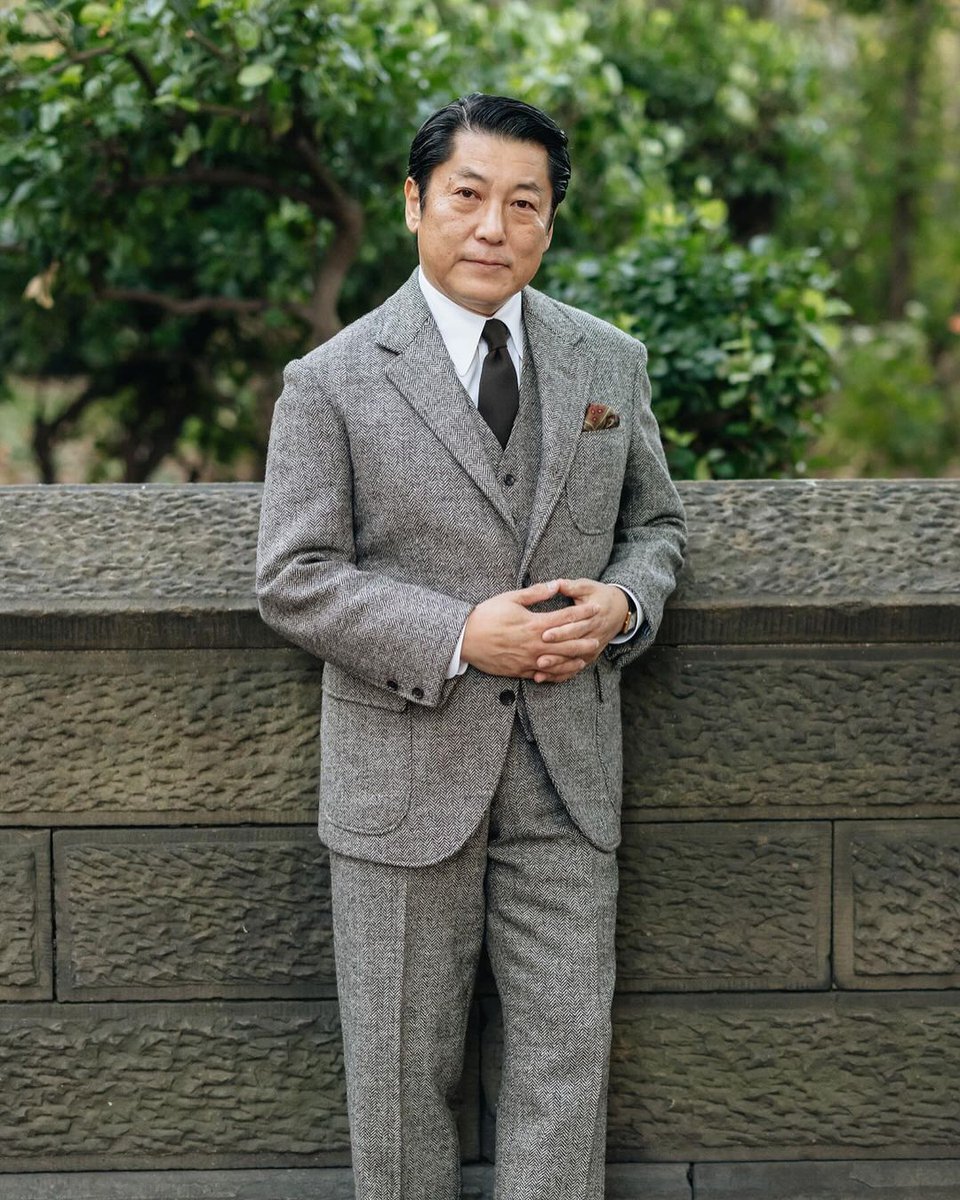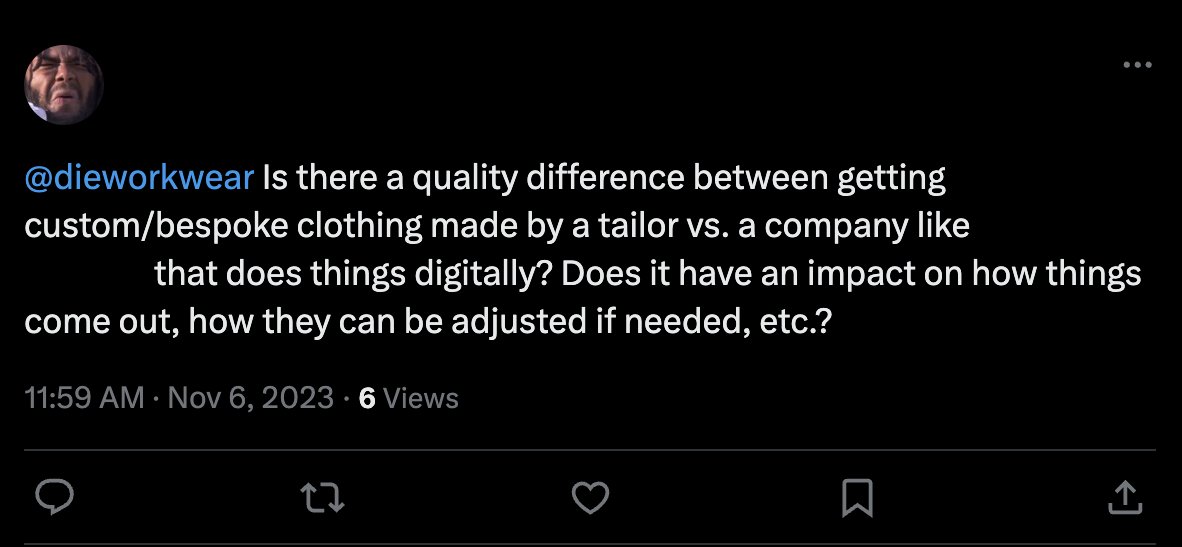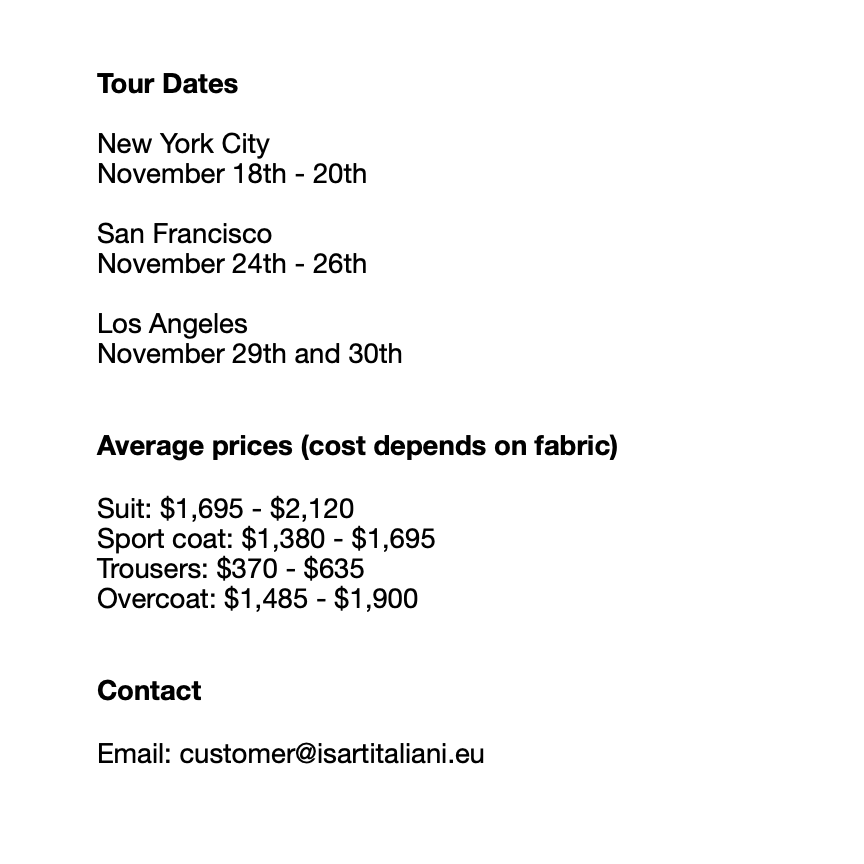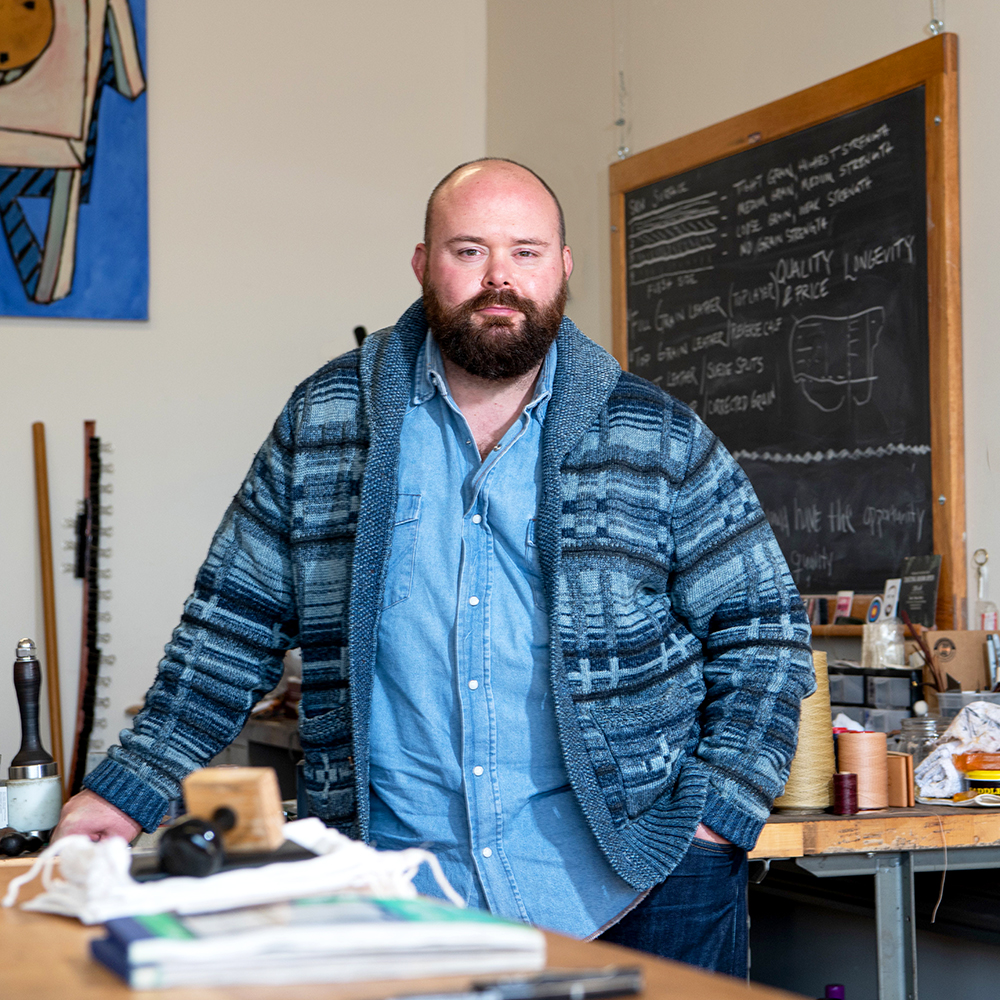I see this often: the idea that expensive clothes are not worth their asking price, and that these factories use the same labor practices as fast fashion. The idea throws doubt on companies trying to do the right thing, and gives cover to fast fashion. But is it true? 🧵 
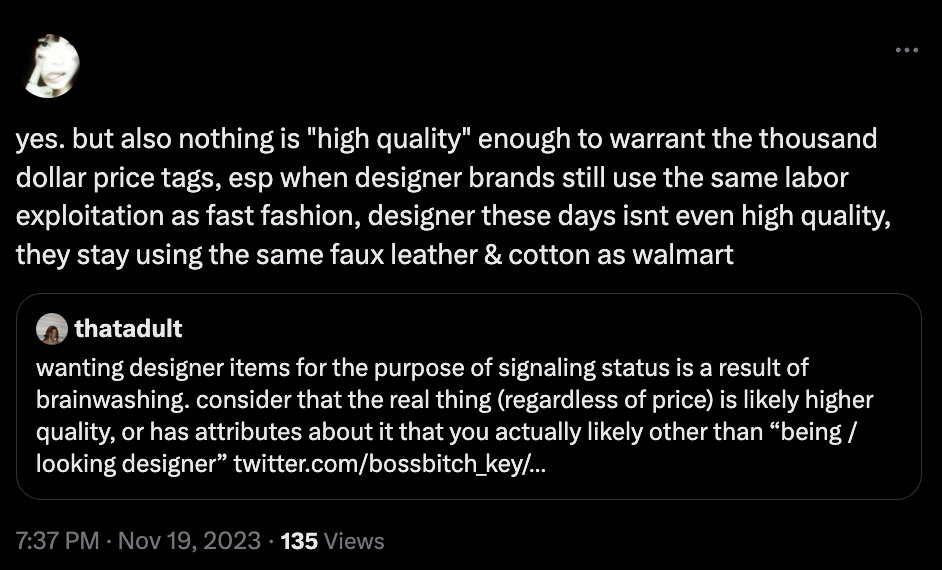
It's true that price alone is no guarantee of quality or ethical production. But it's untrue that this is a reasonable characterization of the market. Let's do some comparisons.
Let's start with a high-end American-made suit because it's what I know best.
Let's start with a high-end American-made suit because it's what I know best.
At a US suit factory, a garment worker's wage will be tied to their skill set. But the average worker will make about $15/ hour. For a 40-hour work week, that's $600. They also get benefits, such as healthcare, which adds to the cost of manufacturing the suit. 

For a single high-end suit, a US factory may spend the following:
Raw labor cost: $300 (for 20 hrs of work)
Benefits: $108
Overhead: $120
Fabric: $175
Trims: $50
The total manufacturing cost is then $753. The wholesale price is then $1,255, and the retail price is $3,138.
Raw labor cost: $300 (for 20 hrs of work)
Benefits: $108
Overhead: $120
Fabric: $175
Trims: $50
The total manufacturing cost is then $753. The wholesale price is then $1,255, and the retail price is $3,138.
What do you get for this price? Full canvassed construction, more care in production, and lots of handwork. On this Oxxford suit made in Chicago, you can see hand pic stitching, handmade buttonholes w/ silk twist, hand-finished lining, and handfelled seams. This is a lot of work!








On a $500 suit, you will see some sacrifices.
1. The garment will be fully machine-made. There will be no handwork
2. Instead of full canvassing, you will either get half canvassing or a fully fused garment.
1. The garment will be fully machine-made. There will be no handwork
2. Instead of full canvassing, you will either get half canvassing or a fully fused garment.
More importantly, at the pattern drafting and cutting stage, the manufacturer will leave no room for error. Normally, a suit will be basted and trimmed, basted and trimmed, to make sure things come out right.
On a cheaper garment, the manufacturer will draft all the patterns with zero room for adjustment, slap the pieces together, and hope for the best. The thing is: sometimes fabric shifts. The wonky garment then goes out on the sales floor.
Let's also talk about working conditions. Cucinelli is an Italian brand that specializes in high-end knitwear. Their factory is an open space with lots of fresh air and sunlight. Workers get a 90 min lunch break, which they can spend at home or in the wood-beamed cafeteria.




The pay here is about 20% above industry standards, and the company invests a lot in the local community. They've renovated a theatre and opened a public library with 400k books. During the pandemic, worker salaries were guaranteed. Everyone also gets off at 5:30 pm.
Now let's compare this to Fashion Nova, which has some production in the US. Let's go back to the suit example. Fashion Nova's suit jackets are $99, often discounted to $49 (fake sales are widespread in fast fashion). 

Setting aside the fact that the cuts are atrocious, let's just talk about quality. These are fully fused suits, which means the outside fabric and interior components are bonded with glue. The outside fabric is also pure polyester. These neither drape well or feel good.
If put through a bad dry clean or steaming process, there's also a chance the fusible delaminates and creates a visible bubble on the outside of the fabric.
$49 retail price. Remember, in our earlier example, the worker got paid $300 to make a suit. The fabric alone was $175.
$49 retail price. Remember, in our earlier example, the worker got paid $300 to make a suit. The fabric alone was $175.

Let's now talk about working conditions. I have an article coming out tomorrow about American sweatshops, including those making clothes for Fashion Nova. Workers producing clothes for these fast fashion brands get paid per operation, not per hour.




They get 3 cents to sew a zipper or sleeve, 5 cents for a collar, 7 cents to prepare the top part of a skirt. To sew a whole dress, they get paid just 15 cents.
In 2016, a UCLA Labor Center study found that the median piece-rate worker in Los Angeles gets paid $5.15/ hour
In 2016, a UCLA Labor Center study found that the median piece-rate worker in Los Angeles gets paid $5.15/ hour
The worker I interviewed works 12 hour days, six days a week. Her pay? $300/ week. Sometimes, she gets paid nothing because the factories just close down. This is not unusual in this business.
Workers complain about rat urine in factories and unventilated rooms full of dust.
Workers complain about rat urine in factories and unventilated rooms full of dust.
Since these people don't have healthcare, they have to contend with all of the physical ailments they develop to bring trendy clothes to consumers who just want cheap glamour.
Pretty far cry from the $15/ hr + healthcare benefits above!
Pretty far cry from the $15/ hr + healthcare benefits above!
It bums me out to see how often this sentiment is repeated: that there's no diff in quality or labor standards between high- and low-end clothes, particularly fast fashion. IMO, this is just ppl trying to make themselves feel better about participating in this exploitative system 
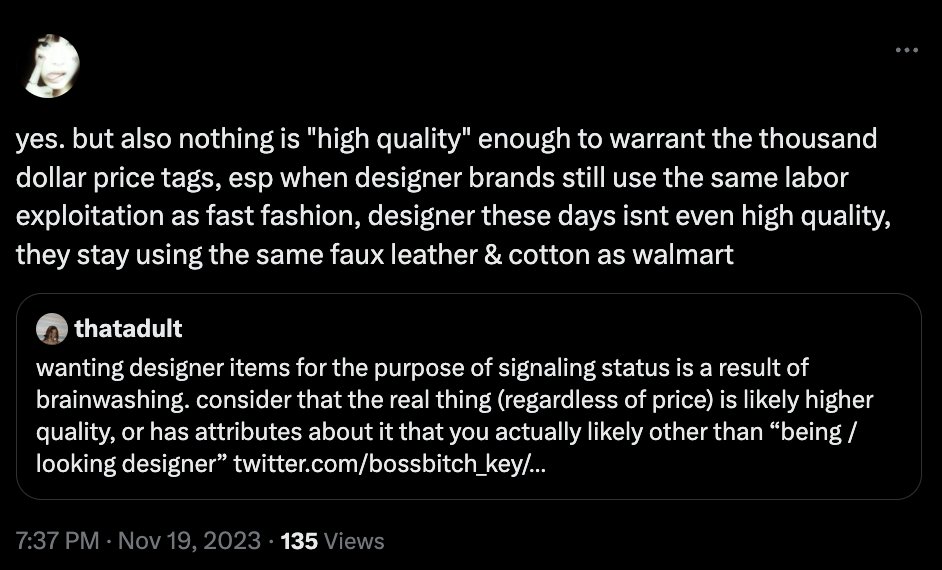
• • •
Missing some Tweet in this thread? You can try to
force a refresh

 Read on Twitter
Read on Twitter









